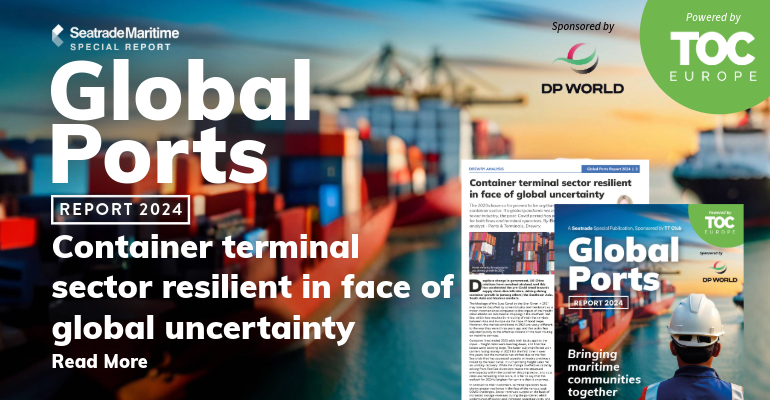Despite a change in government, US-China relations have remained strained, and this has accelerated the pre-Covid trend towards supply chain diversification, driving strong container growth in (among others) the Southeast Asia, South Asia and Mexican markets.
The blockage of the Suez Canal by the Ever Given in 2021 may now be classified by some industry commentators as a minor inconvenience compared to the impact of the Houthi rebel attacks on commercial shipping in the southern Red Sea, which has resulted in rerouting of mainline services between Asia and Europe via the Cape of Good Hope.
However, the market conditions in 2024 are vastly different to the way they were three years ago and the sector has adjusted quickly to the effective closure of the Suez routing on mainline services.
Container lines ended 2023 with their backs against the ropes – freight rates were heading down, and financial losses were looming large. The latter duly manifested with carriers losing money in 4Q23 for the first time in over five years, but the narrative has shifted due to the Red Sea crisis that has squeezed capacity on trades previously linked by the Suez Canal, in turn priming freight rates for an unlikely recovery. While the change in effective capacity arising from Red Sea diversions masks the structural overcapacity within the container shipping sector, and spot rates are retreating once more, it is fair to say that the outlook for 2024 is brighter for carriers than it once was.
In contrast to their customers, terminal operators have shown greater resilience in the face of the various post-COVID challenges. Sector revenues surged on the back of increased storage revenues during the pandemic which undermined efficiency and increased operating costs, and terminal operator earnings received a major boost in 2021 that carried through into 2022.
The steep slowdown in demand experienced from mid 2022 coincided with a surge in global inflation that pushed up both labour and energy costs. While earnings have fallen back from the peak levels recorded in 1Q22, operators have successfully locked in a significant proportion of the gain via inflation-linked tariff increases and this has been further supported by resumption of normal vessel schedules. As a result, Drewry’s Global Container Terminal Earnings Index, published in the Ports and Terminals Insight, was up by almost 11% YoY in 4Q23.
Read the full article in our Global Ports Report 2024
Copyright © 2024. All rights reserved. Seatrade, a trading name of Informa Markets (UK) Limited.
Add Seatrade Maritime News to your Google News feed.  |
